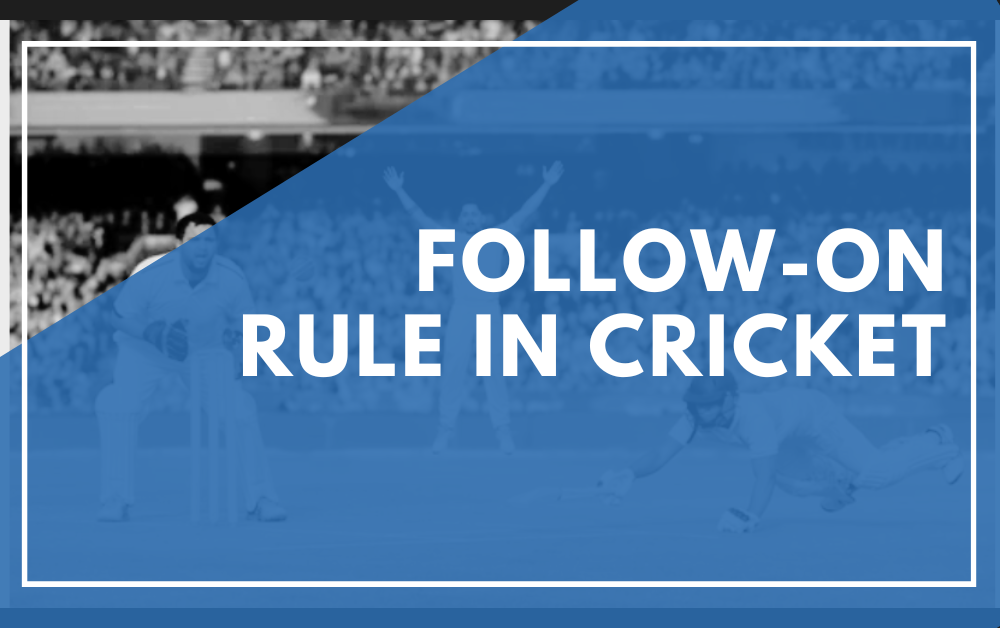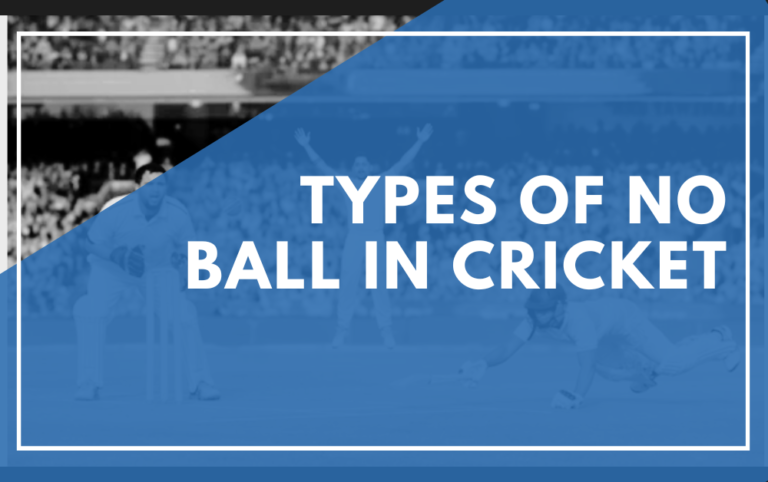The Infamous Follow On Rule in Cricket – All You Need to Know
The follow on rule in cricket is one of the most famous and controversial rules in the game. This article explains everything you need to know about the follow-on, including when it is enforced, the strategy behind it, famous examples from test history, and debates around changing the rule. Read on to gain a full understanding of this intriguing aspect of test cricket.
What Is the Follow On Rule in Cricket?
The follow-on is a rule in test cricket that gives the captain of the team batting first the option to force the opposition to bat again immediately if they do not get within 200 runs of the first innings total.
The rationale is that if a team bat first and establish a substantial lead of over 200 runs in their first innings, they are in a dominant position. The follow-on rule allows them to capitalize on this strong position by making the opposition bat on a deteriorating pitch while their bowlers are fresh. This increases the chances of bowling the opposition out cheaply and winning the match.
The follow-on is an optional choice for the captain of the team with the large first innings lead. There is no obligation to enforce it. The captain may choose to bat again rather than enforce the follow-on for strategic reasons. But the choice to enforce the follow-on can be a match-winning decision.
When Can a Team Enforce the Follow-On in Cricket?
For a team to have the option to enforce the follow-on, they must meet certain conditions:
- The match must be a test match or first-class cricket game played over multiple days. The follow-on rule does not apply in limited overs cricket.
- The team batting first must have scored over 200 runs more than the opposition scored in their first innings. If the lead is 150-199 runs, they cannot enforce the follow-on.
- In test matches, the follow-on can only be enforced if there is more than one day remaining in the game. It cannot be enforced if it is the last day.
- In first-class cricket, the follow-on can be enforced if there is more than one session left to play.
So in summary, if you are playing test cricket or first-class cricket, bat first and establish a lead of 200 runs or more with ample time remaining, the option to enforce the follow-on is available.
What is the Reasoning Behind Enforcing the Follow-On?
There are some clear strategic benefits for a team enforcing the follow-on rather than choosing to bat again themselves:
- Their bowlers will be fresh while the opposition’s batsmen may be tired having spent a long time fielding
- Making a team bat again immediately puts scoreboard pressure on them to avoid an innings defeat
- The pitch conditions are likely to have deteriorated which makes batting harder
- It maintains power of the match rather than allowing the opposition a chance to get back into the game
So the follow-on is used as a ruthless tactic to capitalize on a strong position and drive home the advantage. While there are risks, more often than not, enforcing the follow-on increases the chances of victory.
What Tactical Factors Must the Captain Consider?
Just because the option is available, enforcing the follow-on is not always the best tactical choice. There are some key factors the captain must weigh up:
- The strength of your bowling strike – do you have the bowlers to quickly bowl the opposition out again?
- The condition of the pitch – is it deteriorating or still good for batting?
- The state of the match – is there enough time left to bowl the opposition out twice?
- The relative freshness and fatigue levels of both teams – are your bowlers tired from the first innings?
- The morale of the opposition – are they demoralized or fired up for a fightback?
Using their judgment, the captain must decide if enforcing the follow-on or batting again themselves gives the best chance of victory. There are risks both ways.
What are the Most Famous Examples of the Follow-On Backfiring?
While most of the time enforcing the follow-on ends in victory, there have been some very famous test matches where it backfired spectacularly:
- England vs Australia, 1894: England enforced the follow-on but Australia incredibly won by 10 wickets.
- India vs Australia, 2001: Australia enforced the follow-on but India achieved the highest ever 4th innings run chase of 7-657 to win in Kolkata.
- South Africa vs England, 2019: England enforced the follow-on but were bowled out cheaply in their second innings, allowing South Africa to achieve a record chase at the Oval.
These matches entered cricket folklore as amazing comebacks after teams were forced to follow-on. They demonstrate the risk inherent in enforcing the follow-on rather than batting again.
Should the Follow-On Rule be Changed or Removed?
Because of famous matches like India’s 2001 comeback, there has been occasional debate over changing or scrapping the follow-on rule in cricket.
Some argue it is draconian and the risk of epic fightbacks is too high. Meanwhile, traditionalists want to keep the rule to maintain attacking, ruthless test cricket.
There were trials to make the follow-on optional if the lead was between 150 and 200 runs. However, the laws were reverted back so only a lead of 200 runs or more allows the follow-on to be enforced.
Despite high-profile exceptions, enforcing the follow-on remains an integral part of test cricket. It rewards dominant first innings batting performances and promotes aggressive tactics to drive home an advantage. Most followers of test cricket want to maintain the follow-on law.
10 Key Questions That Unravel the Follow-On Rule:
- What is the Follow-On Rule? Simply put, it allows the team batting first, if they hold a substantial lead after their first innings, to force the team batting second to bat immediately again. No rest, no respite, just another split at the willow.
- How Much of a Lead is Enough? In five-day Test matches, the magic number is 200 runs. In shorter formats, the bar lowers with 150 runs for three-four day matches and 100 runs for two-dayers. One-day cricket boasts a 75-run threshold.
- Who Decides? The captain of the team batting first holds the reins. It’s a weighty decision, fraught with strategic calculations and potential backfire.
- Why Enforce the Follow-On? The primary motive? Speeding up the game and increasing the possibility of a result within the allotted time. It prevents the team batting second from digging in and potentially dragging the match to a draw.
- Follow-On Frenzy: Is it Always a Winning Recipe? History tells a different story. There have been instances where teams opting for the follow-on have come crashing down. Remember the iconic 2001 India vs. Australia Test where VVS Laxman and Rahul Dravid spun a fairy tale comeback?
- The Great Debate: Should the Rule Exist? Purists argue it disrespects the spirit of the game, denying the team batting second a fair chance. Others see it as a necessary evil, keeping Test cricket exciting and preventing endless stalemates.
- Follow-On and the Evolution of Cricket: With shorter formats taking center stage, is the follow-on becoming obsolete? Should the rule be tweaked for different formats or even scrapped altogether?
- Follow-On: A Political Playground? Captains often face immense pressure from various stakeholders – fans, media, eveFn boards – when making the follow-on call. Can they truly remain objective under such scrutiny?
- Beyond Numbers: The Follow-On’s Psychological Warfare: It’s not just about runs on the board. The follow-on is a psychological weapon, shattering confidence and injecting doubt into the opposition. Can a team rise above the mental pressure and turn the tide?
- Follow-On’s Future: What Lies Ahead? Will the rule adapt to the changing landscape of cricket? Will we see innovative strategies emerge to counter its sting?
Delving Deeper: Insights into Each Question
Each of these questions deserves a deeper exploration. We’ll delve into the history of the follow-on rule, analyzing its evolution through the years. We’ll dissect the strategic nuances of enforcing the follow-on, examining factors like pitch conditions, weather, and opposition form. We’ll also explore the psychological impact of the rule, both on the team facing it and the one wielding it. Through compelling examples and expert opinions, we’ll shed light on the controversies surrounding the follow-on, leaving you with a nuanced understanding of this complex and captivating aspect of Test cricket.
Conclusion – A Famous Rule That Promotes Exciting Cricket
The follow-on rule whereby a team can force the opposition to bat again immediately after a 200 run first innings deficit is one of the most famous rules in test cricket. It is an optional tactic for a captain with a large lead, designed to capitalize on a strong position.
Famous comebacks like Kolkata 2001 demonstrate the risk of backfiring. However, the follow-on generally increases victory chances through relentless aggression on a deteriorating wicket. This famous cricketing rule continues to provoke debate between traditionalists and progressives. But it remains an intrinsic part of test cricket promoting exciting, attacking play.

Live Cricket Stream: Smartcric is promoted as a go-to platform for live cricket streams, offering access to matches through channels like Willow HD and Star Sports HD. The website emphasizes its role in providing live coverage to a global audience, enhancing accessibility to cricket matches.







